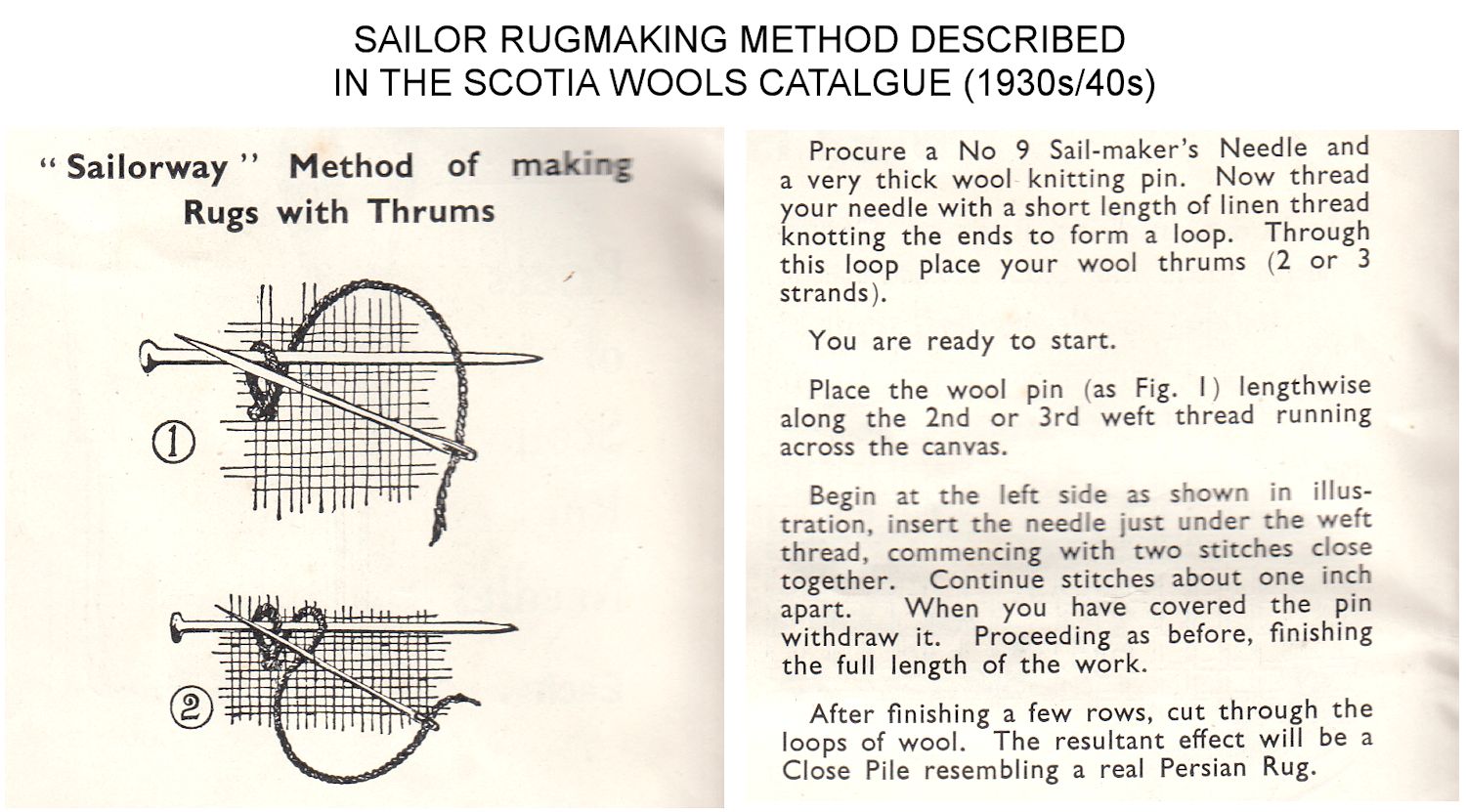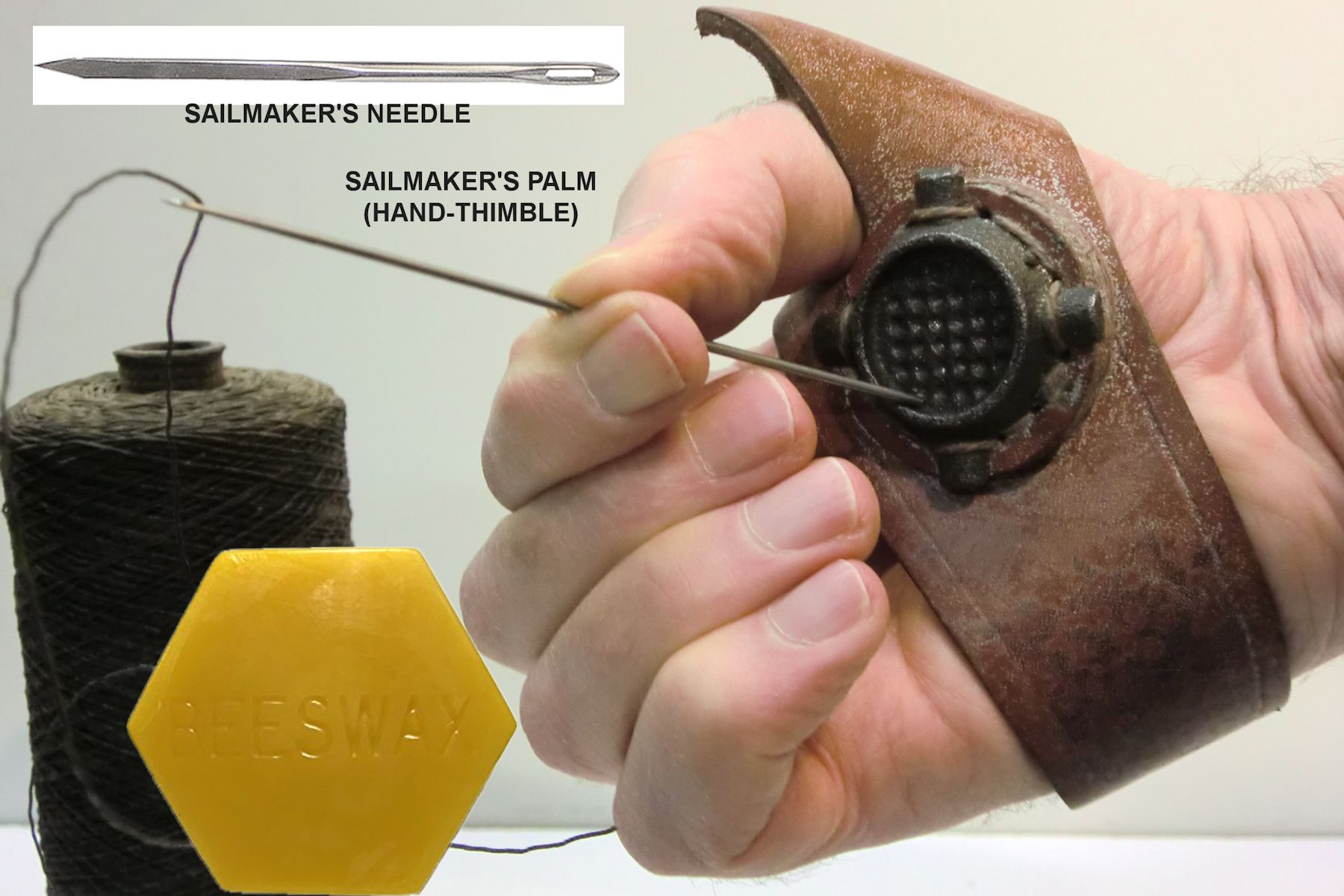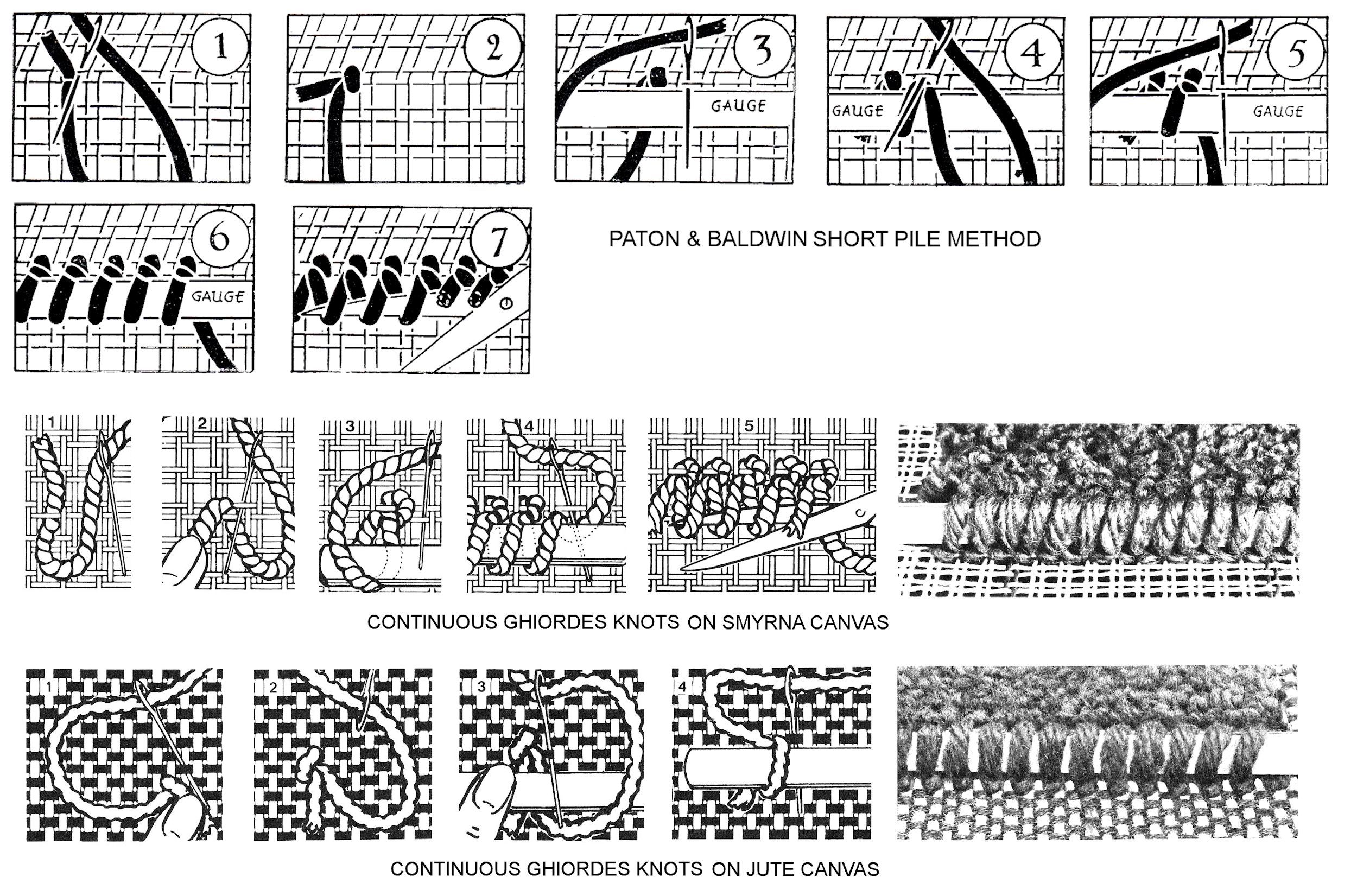
A SAILMAKER’S RUG
This method makes a very dense, very hard wearing rug. It uses a metal rod as a pile depth gauge (a wooden rod would wear as the rug is made, resulting in an uneven pile). In rug-making terminology you are making continuous rows of Ghiordes knots using a large needle to work a length of yarn around a pile depth gauge. After working each row, the gauge is slid out of the loops. The addition of twine (read on!) ensures no rug yarn is wasted. It’s a thrifty method that would be used by folk with very little income. I’ve added notes for the modern rug-maker wanting to try this method.

MATERIALS
For the rug canvas, use strong hessian or jute sacking, for example a washed sack opened along the side and bottom seams.
For a “pile gauge” use a steel rod 2 ft (60 cm) long and 3/8” (1 cm) or ˝” (1.25 cm) diameter. The diameter of the rod governs the depth of pile. The modern rug-maker could use a metal ruler instead.
You need a strong sail-maker’s needle about 4 inches long. These are flattened at the pointed end, but if you’re not a sailor you can use a large carpet needle. Because a sailor’s needle is sharp at both ends, a sail-maker would have used a “palm” or “hand thimble” when working with tough canvas – luckily sacking already has holes in it (but you might want to use a finger thimble).

A ball of strong thin twine and a ball of beeswax (for lubricating the twine) – this ensures no wool gets wasted. Beeswax was used in candles and in wood polish. Soya wax (from scented candles) may do the trick. Admittedly you could omit the twine entirely and use a large bodkin if thriftiness is not a concern.
Thrums from a carpet factory. You will be using two Axminster-weight thrums at a time, making sure they are roughly the same length (to prevent any waste). The modern rug-maker could use thin uncut rug-wool . Cones of leftover carpet yarn turn up for sale, but with thinner types you’ll need more than two threads at a time. If you are substituting wool, cut it to thrum lengths (e.g. 2 foot / 60 cm) .
Instead of threading the thrums through the sailmaker’s needle, thread a length of thin twine (it should be twice the length of the needle) through the needle and tie the free end of the twine into a loose loop. Quickly run the twine over the beeswax several times to lubricate, stiffen and strengthen it. Thread a paired thrum through the loop and bring the ends together. The needle pulls the twine which in turn pulls the thrums – this means you use the whole thrum without wasting any wool.
Place the hessian on your lap with the starting point on the top left. Let the loose hessian fall over your knees and onto the floor. Hold the steel rod in your left hand pointing it to the right and align it with the horizontal threads of the hessian sacking.
Insert the threaded needle under a horizontal thread, pointing away from you, under the steel rod then bring it back over the top of the steel rod towards you. Pull the thread through almost to the end of the paired thrums. Then insert the needle 2 threads to the left and two below the first. Pull the thread through to lightly form the first knot. This anchors the thrum.
Insert the needle a distance of three vertical threads to the right. Pull the thread through and tighten the loop around the steel rod, then bring the needle back over towards you. This makes a single loop over the steel rod. Secure the loop by making a stitch below and to the left (the same as the knot that anchored the thrum).
Keep making loops around the rod, replacing the thrums until you reach the end of the row. If the gauge is shorter than the canvas width, you can slide it across. At the end of the row, anchor the last loop and clip off the last thrum. After a while, the twine will becomes frayed and loose so run it over the beeswax again.
Start the next row at the left hand side of the hessian, five horizontal threads below the previous loops. Repeat the looping and knotting. When you finish looping the rug, bind the ends by turning them under and stitching with twine or with strong linen thread.
If you are having trouble imagining this, these images show a very similar method:

For a tufted pile rug take a pair of sharp scissors and cut along the loops. For a loop pile rug (which is harder wearing) don’t cut the loops. Stitch the rug onto a canvas or muslin backing if desired.
For a patterned rug, draw the designs on the hessian and use different colour threads for each section of pattern (remember to anchor the last loop and first loop when you change colours).
You are visitor number: